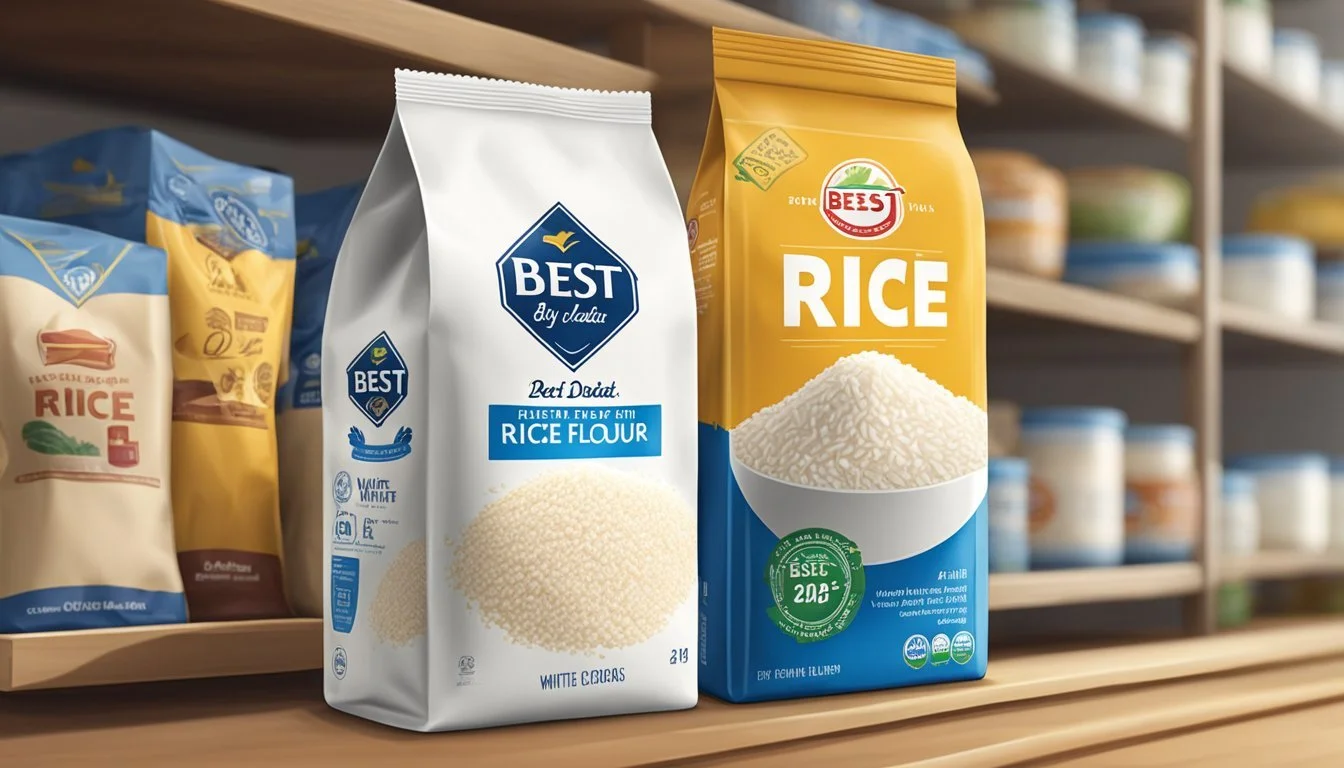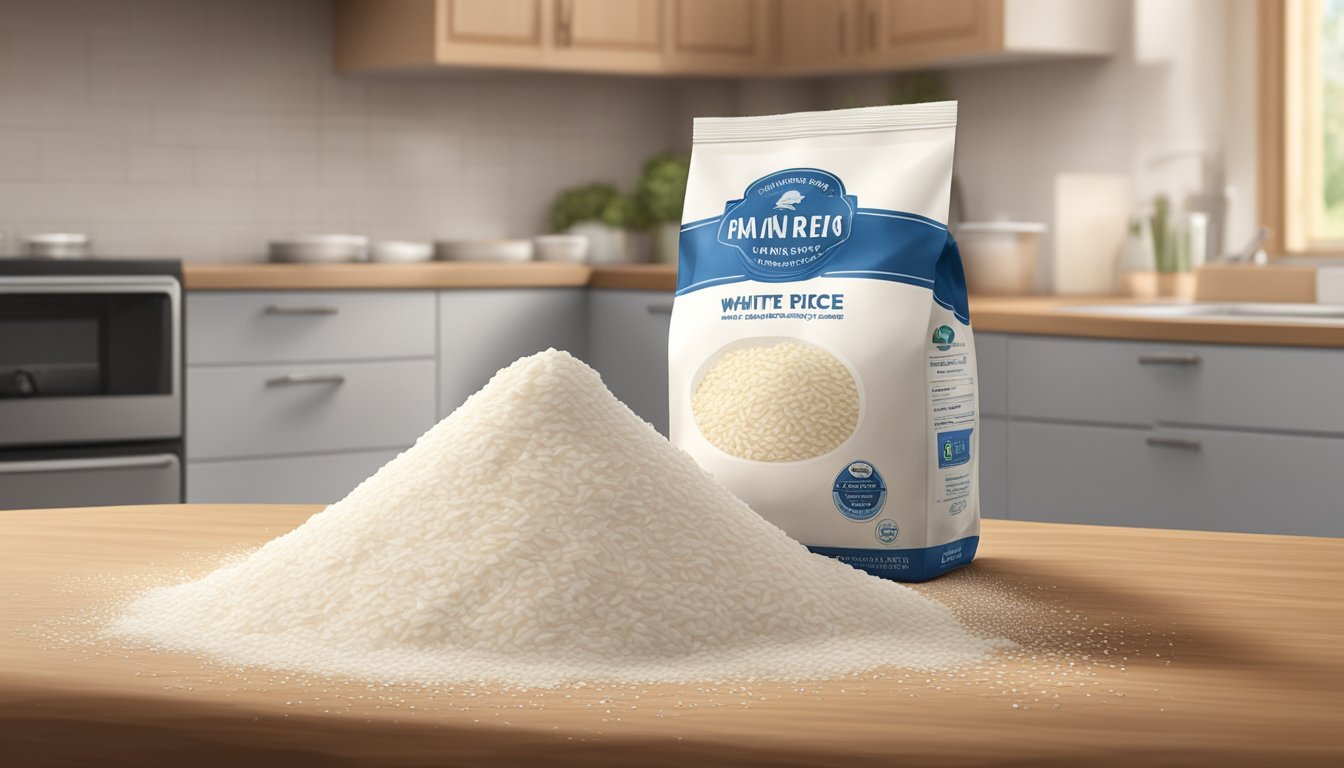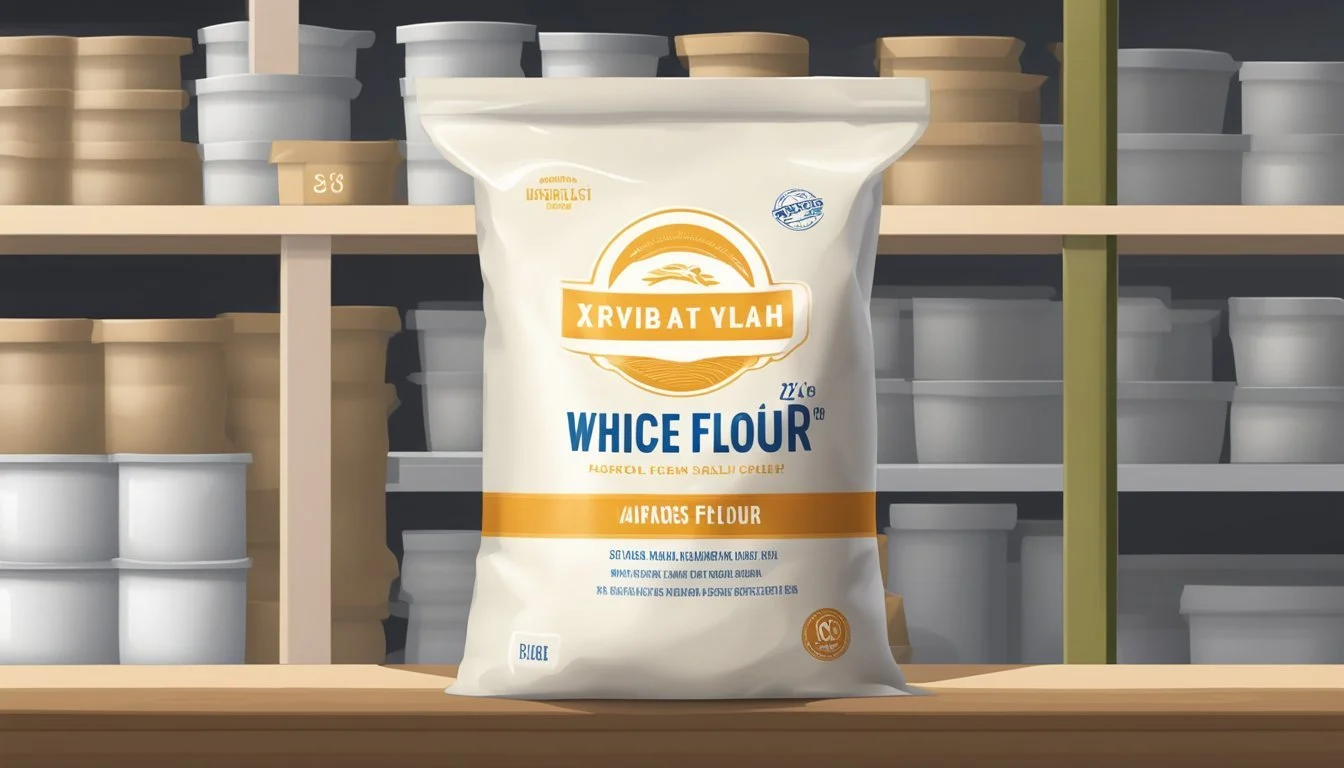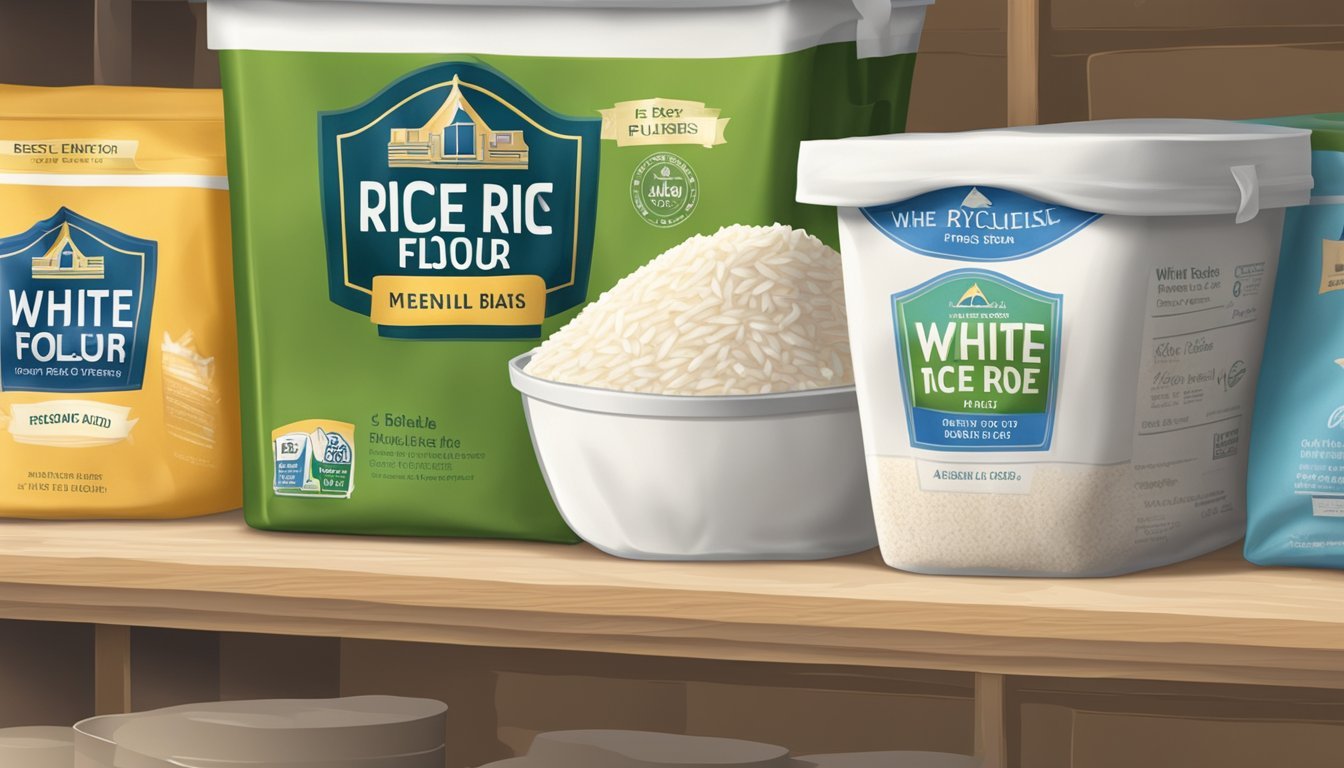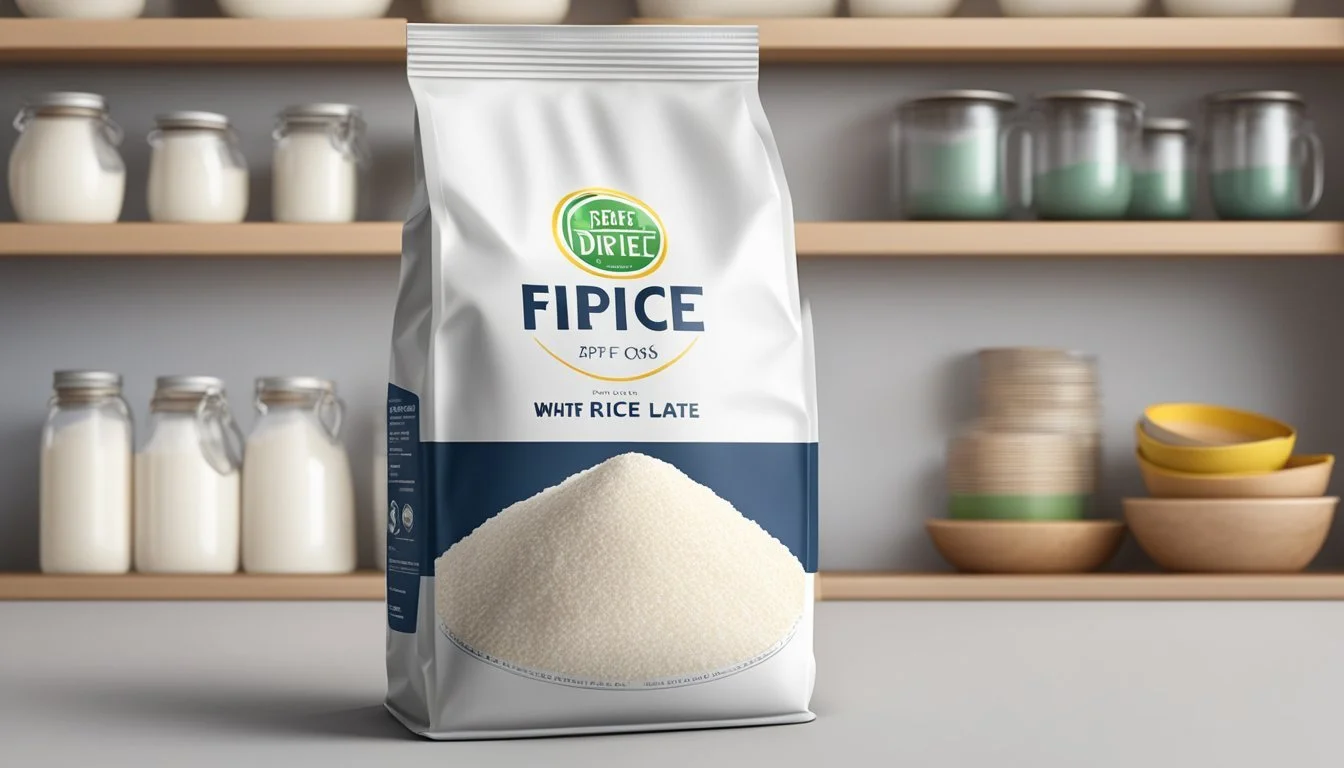How Long Does White Rice Flour Last?
Shelf Life and Storage Tips
White rice (What wine goes well with rice?) flour (how long does white rice flour last?) is a popular ingredient in many kitchens due to its gluten-free nature and versatility in various recipes. This pantry staple typically has a longer shelf life compared to its whole-grain counterparts, such as brown rice flour, because it lacks the oils that can cause other flours to spoil quickly. The storage method plays a critical role in preserving its shelf life; when stored properly in a cool, dry place away from moisture and heat, white rice flour can maintain its quality.
Most white rice flour comes with a best-by date, giving consumers a rough guide on when the product is expected to retain optimal quality. However, this is not an expiration date. The flour can often last beyond this timeframe, especially if it has remained unopened and has been kept in favorable conditions. Observers note that a general shelf life of up to six months is advisable when kept at room temperature, but this can extend significantly if the flour is stored in airtight conditions in a freezer, where it can last up to one to two years, thus ensuring its freshness and usability. It's imperative for consumers to look for any signs of spoilage, such as an unpleasant smell or changes in color, to determine if the flour has gone bad.
Understanding White Rice Flour
White rice flour is a gluten-free alternative to traditional wheat flours, distinguished by its unique composition and diverse applications, making it a staple in many gluten-free diets.
White Rice Flour Composition
White rice flour is derived from either white or brown rice and consists primarily of starch, which attributes to its high carbohydrate content. This flour is notably low in fat and lacks gluten, a protein found in wheat, making it suitable for individuals with celiac disease or gluten sensitivity. Unlike whole-grain brown rice flour, which contains the rice bran and germ, white rice flour is made from rice that has had these components removed, resulting in a finer texture and a longer shelf life. It does not contain significant amounts of vitamins or proteins when compared to other flours but is often enriched to improve its nutritional value.
White Rice vs. Other Flours
White rice flour is just one of the many flour varieties used for different health and cooking applications. Here is a comparison with other popular types of flour:
Grain-Based Flours:
Whole-Wheat Flour: Rich in fiber and protein, contains gluten.
White Flour: More processed, has less fiber than whole-wheat.
Brown Rice Flour: Contains rice bran and germ, richer in nutrients than white rice flour.
Coconut Flour: High in fiber and healthy fats, lower in carbohydrates.
Oat Flour: Contains soluble fiber, beneficial for heart health.
Quinoa Flour: Good source of protein and all nine essential amino acids.
Buckwheat Flour: Despite the name, it's gluten-free and high in antioxidants.
Amaranth Flour: Protein-rich and contains lysine, an essential amino acid that's lacking in many grains.
Compared to these flours, white rice flour is most favored for its neutrality in flavor and light texture, which makes it particularly useful in gluten-free baking. It is also favored for its ease of digestion and non-allergenic qualities, aligning well with a variety of dietary restrictions.
Shelf Life Fundamentals
White rice flour's longevity is influenced by several factors, such as storage conditions and the nature of its constituents. Understanding these specifics is key to maximizing its shelf life and ensuring food safety.
Factors Affecting Shelf Life
White rice flour's shelf life can vary, but when stored correctly, it remains usable for an extended period due to its low moisture content. The essential factors affecting shelf life include:
Temperature: A cool, dry place is ideal for maintaining flour quality. High temperatures can accelerate the degradation process.
Humidity: Excessive humidity or moisture can lead to spoilage. Rice flour should be kept in a dry place to avoid mold growth.
Oxygen and Light: Prolonged exposure to oxygen and light can compromise flour's freshness. Opaque, airtight containers offer protection from these elements.
Sealed Container: Storage in a sealed container minimizes the flour's exposure to environmental variables that can degrade its quality.
Expiration Date Explanation
White rice flour packaging typically includes an expiration date or best-by date which refers to the timeframe in which the product is expected to maintain its best quality. Here's an explanation:
Expiration Date: Indicates when the flour should be used by for peak quality. After this date, it may not necessarily spoil but could start to decline in quality.
Best-by Date: Suggests when the product's quality will start to degrade, but it might still be safe to consume after this point, provided it was stored appropriately and shows no signs of spoilage.
Proper Storage Practices
White rice flour can maintain its quality longer when stored under optimal conditions. The key elements for preserving rice flour include location and container choice, both vital for preventing spoilage and maintaining freshness.
Correct Storage Locations
Pantry: For unopened rice flour, a cool and dry pantry away from direct light ensures a conducive environment. Prolonged exposure to heat, light, or moisture accelerates spoilage.
Fridge: Opened rice flour benefits from refrigeration. By placing it in the fridge, one can extend its shelf life due to the cooler temperatures slowing down the degradation process.
Freezer: For long-term storage, a freezer is ideal. It can significantly extend the shelf life, keeping the flour usable for months beyond its pantry date.
Choosing the Right Container
Airtight Container: Rice flour should be stored in airtight containers to protect it from oxygen and moisture, which can lead to spoilage.
Container Type Benefits Plastic Lightweight and often airtight Glass Impermeable and airtight if properly sealed Metal Durable and airtight with proper lids
Sealed Container: Regardless of the material, ensure the container seals tightly. A tightly covered container minimizes the flour's exposure to air and contaminants.
By following these storage recommendations, white rice flour's shelf life can be maximized, retaining its quality for culinary use.
Signs of Spoilage
When assessing whether white rice flour has spoiled, one should look for several key indicators which include changes to its visual appearance and smell, and alterations in taste and texture.
Visual and Smell Indicators
Visual Changes:
Color: Fresh white rice flour typically has a uniform, off-white color. Any discoloration such as yellowing or greyish tones can indicate spoilage.
Mold Presence: The development of mold, which can appear as spots or fuzz, is a clear sign that the flour should not be used.
Smell:
Fresh white rice flour has a neutral or slightly nutty aroma. Any off-odors, such as a rancid or musty smell, are indicative of spoilage.
Taste and Texture Changes
Taste:
Flour that has gone bad may have an unpleasant, sour, or bitter flavor.
Texture:
If the flour feels unusually clumpy or if it no longer has a powdery consistency, this can suggest that it has been exposed to moisture and may be compromised in quality.
Preventing and Identifying Contamination
Proper storage and vigilance are essential in preventing contamination of white rice flour by pests, bacteria, and mycotoxins, ensuring both food safety and quality.
Keeping Pests and Bugs Out
To protect white rice flour from pests such as weevils and bugs, it is crucial to store it in airtight containers. These containers not only prevent the entry of pests but also limit the exposure to moisture which can lead to spoilage. Regular inspection of the flour can help identify any signs of infestation, such as the presence of small bugs or larvae. Consider these steps:
Storage: Use sealed containers that are impermeable to pests.
Inspection: Routinely check for signs of bugs, discoloration, or unusual odors.
Protecting Against Bacteria and Mycotoxins
Bacteria and mycotoxins pose a health risk when they contaminate food products. To minimize this risk:
Dry Storage: Keep the white rice flour in a cool, dry place to hinder bacterial growth and mycotoxin formation.
Good Hygiene: Maintain cleanliness in the storage area to prevent bacterial contamination which can lead to food poisoning.
Inspection: Look for changes in color, smell, or texture as indicators of potential contamination.
By adhering to these methods, one can significantly reduce the chances of white rice flour becoming contaminated, thereby safeguarding health.
Maximizing Flour Longevity
To preserve its shelf life and maintain freshness, white rice flour requires certain storage techniques. Specific methods such as freezing and using oxygen absorbers are instrumental for long-term storage.
Freezing for Extended Freshness
Freezing is an effective way to extend the flour's longevity well beyond its typical pantry shelf life. To freeze white rice flour:
Transfer the flour to an airtight freezer bag or container to prevent moisture and other contaminants.
Label the container with the date of freezing to keep track of storage time.
Maintain a consistent freezer temperature, as fluctuation can cause condensation and affect the flour's quality.
By keeping it in the freezer, the shelf life of white rice flour can be significantly extended—often up to a few years—without compromising its quality.
Utilizing Oxygen Absorbers and Desiccants
Oxygen absorbers and desiccants provide another layer of protection for white rice flour during storage. Here's how they work:
Oxygen absorbers remove oxygen from the environment, which can slow down the oxidation process that leads to rancidity.
Desiccants absorb moisture, helping to keep the dry rice flour in a dry, stable state that discourages microbial growth.
To use these tools effectively:
Place an appropriate-sized oxygen absorber inside the flour storage container.
If using desiccants, ensure they are food grade and do not come into direct contact with the flour.
Seal the container tightly after adding these protective elements.
By reducing oxygen and controlling humidity within the storage container, these methods can help maintain the flour's freshness for a prolonged period.
Usage After Expiration
When considering the use of expired white rice flour, it is crucial to analyze both its potential effects and adhere to specific guidelines that ensure food safety and culinary success.
Effects of Using Expired Flour
Using expired white rice flour can lead to a decrease in quality and nutritional value. While rice flour may last beyond the expiration date, it is susceptible to rancidity, which results in a stale or off-putting smell and taste, effectively ruining baked goods. Additionally, consuming flour that has gone bad potentially increases the chance of digestive issues due to the breakdown of oils.
Quality: Loss of freshness, potential for stale flavor, and decreased leavening abilities.
Rancidity: Off-putting odors and undesirable flavors in prepared dishes.
Digestive Issues: Stale or spoiled flour may cause discomfort or more severe digestive reactions.
Guidelines for Cooking with Aged Flour
When cooking or baking with flour that is past its expiration date, strict guidelines ensure the maintenance of food quality and safety.
Inspect: Always visually and olfactorily examine the flour for mold, pests, and the signs of rancidity. Discard if any signs of deterioration are present.
Storage: Store flour in a cool, dry place, ideally refrigerated or frozen, to extend its shelf life.
Quality: Taste-test a small batch before using it in a larger recipe to ensure the flavor profile has not been compromised.
Hygiene: Always practice good kitchen hygiene to reduce the risk of contamination and maintain food safety standards.
By following these steps, using expired rice flour can be done effectively without sacrificing quality or risking health, ensuring cooking outcomes remain successful.
Understanding the Label and Food Safety
When handling white rice flour, it is vital to understand the labeling on the package for both expiration dates and safe storage practices to maintain food safety.
Interpreting Labels and Dates
Best-By Date: The 'best-by' date on a white rice flour package is the manufacturer's estimate of how long the product will remain at peak quality. It is not an exact science but a good guideline for consumers. After this date, while the flour may not be at its best, it is not necessarily unsafe to consume.
Expiration Date: A true 'expiration date' is different from a 'best-by' date, and it indicates the end of the product's safe consumption period. However, for white rice flour, an 'expiration date' is not commonly used; instead, a best-by date is more applicable.
Food Safety Concerns and Tips
Storage: To maximize the shelf life of white rice flour beyond the best-by date, one should store it in a cool, dry place. Using an airtight container can prevent moisture and pest intrusion, which can lead to mold growth and potential health hazards.
Temperature Control: The USDA recommends that perishable items be refrigerated, and while white rice flour is not highly perishable, refrigeration can extend its shelf life up to a year, according to the Coconut Mama.
Food Poisoning: When using white rice flour past its best-by date, consumers should be aware of the risks of food poisoning. Though the risk is relatively low compared to raw foods, one can never be too cautious. It is essential to inspect the flour for signs of spoilage, such as a sour smell or discoloration, before use.
Processing: Properly processed and packaged white rice flour usually has a long shelf life due to its reduced oil content, which slows down spoilage. However, any signs of moisture or clumping in the flour can suggest spoilage and should be avoided to ensure food safety.
Additional Resources and Information
When exploring the shelf life of white rice flour, consumers may seek authoritative resources for accurate information. The following is a curated selection of resources that could provide further insights:
Books and eBooks: Food storage guides that focus on pantry staples often cover the storage and shelf life of flours. Look for titles that discuss the processing and storage of whole grains and their byproducts.
Online Forums: Communities like Reddit and specialty cooking forums have threads dedicated to the preservation and use of white rice flour. They can be avenues for recipes and practical advice.
Cooking Websites: These may offer detailed articles and FAQs about the best practices for storing various types of flour, including white rice flour.
Government Agencies: Websites such as the USDA provide guidelines on food storage safety, which includes information on flour.
Affiliate Websites: Some websites provide information on storage containers or tools for keeping flour fresh and they may use affiliate links. They may earn a commission on sales but still offer valid information on keeping white rice flour at its best quality.
Resource Type Benefit Books & eBooks Detailed and comprehensive knowledge Online Forums Community experience and practical tips Cooking Websites Recipes and expert storage tips Government Agencies Safety guidelines and official recommendations Affiliate Websites Product recommendations with practical reviews
When browsing for these resources, readers should look for the most recent publications or discussions to ensure they're getting up-to-date information on best practices for flour storage.

